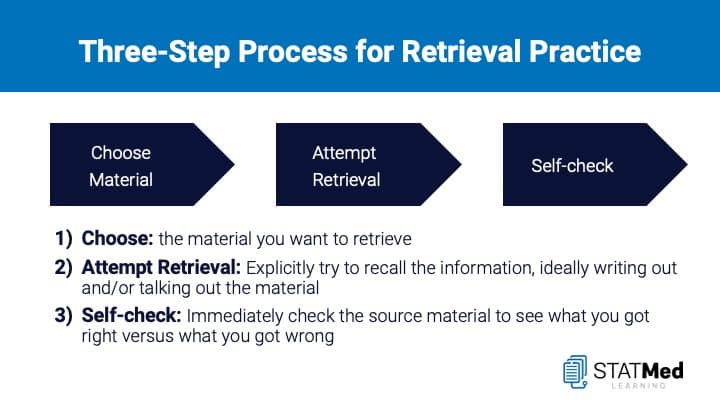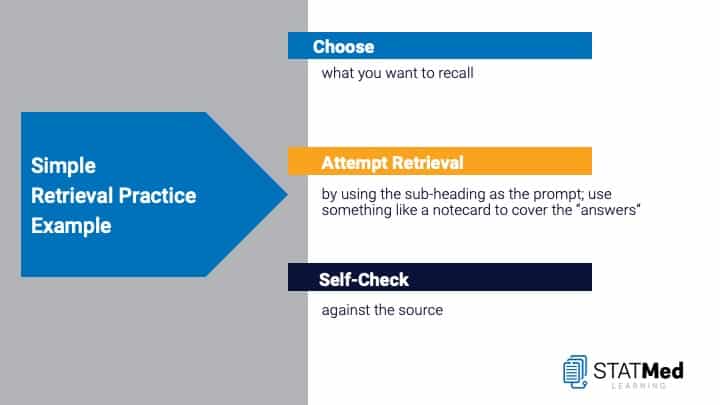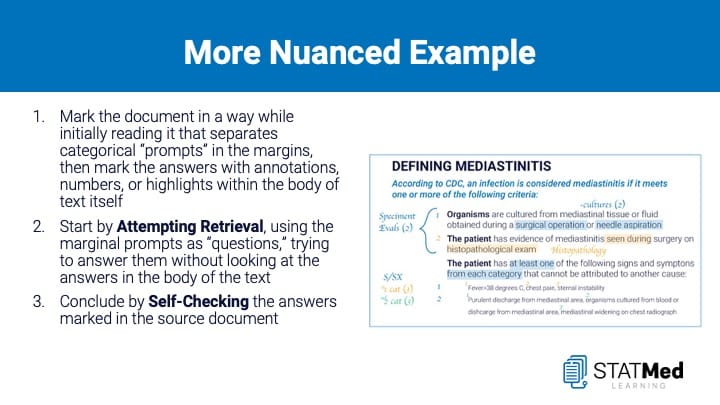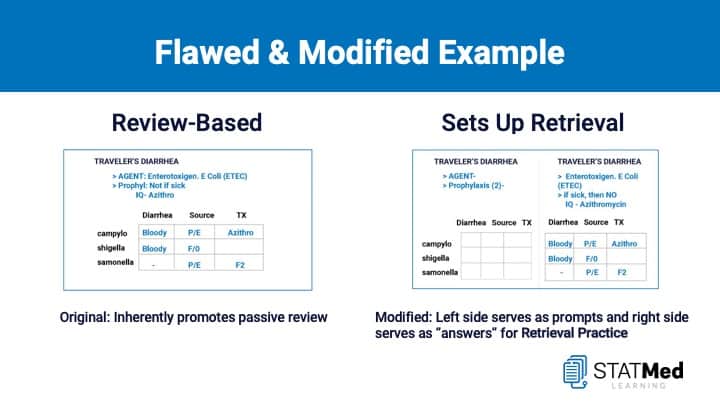Study More Effectively and Increase Retention with Retrieval Practice
When you’re trying to improve your med school grades, we have a few questions you should ask yourself. How much of your study time is dedicated to “reviewing,” “re-reading,” or “looking over” material you have already studied? How much do you value “reviewing” content multiple times before the test?
If you are unhappy with the fruits of your study labor, the answer is probably “TOO MUCH.”
Why?
Because REVIEWING is BAD. By “bad” we mean it is one of the lowest yield ways we spend time studying.
After your initial study experience, which likely involves watching lectures and reading the material once, or simply reading the material once (if lectures are not a factor), your next experience should include ATTEMPTING RETRIEVAL instead of engaging in PASSIVE REVIEW.
| Defining REVIEW: | Defining RETRIEVAL PRACTICE: |
| When the learner directly re-reads, “looks over,” or skims material they have already studied when the information is in front of their face | When learners force themselves to try to recall information already studied, followed by an immediate self-check from the source |
| How most students spend their timePassive, inefficient, and creates the TRAP OF FAMILIARITYRecognition feels goodDoesn’t demand struggle with recall | Forcing retrieval requires using the right kind of EFFORTDoesn’t feel goodDirectly builds better memories & retrieval pathways Learners often engage in this too little or too late |

Here is a simple example of how to bring RETRIEVAL PRACTICE into your daily study routine: rather than just re-reading a slide, cover up the details, and use the sub-heading as a prompt. Force yourself to try to recall the information. Then self-check from the source.

Perhaps you want to mark the source material in a way that demands more critical thinking, engagement, and transaction between you and the content? Some learners NEED to map out the hidden structure of the source material, while others will find it a nice boost. See the example below for a brief illustration:

Finally, some people like to make their own notes. If this is something that interests you, we recommend that you construct them in a way that offsets the temptation to “review” them and instead sets you up for RETRIEVAL PRACTICE. See below:

For any of these constructs to have value, you must make sure that you actually come back to the material and engage in retrieval practice.
We teach this skill in greater context in our STATMed Study Skills Class. You can also check out the video at the top of this post or explore our blog and YouTube channel for more tips and insights.
Ready to improve your studying and get better results? Get in touch!